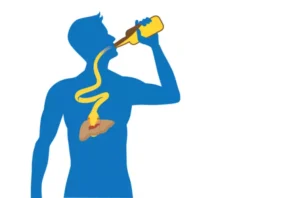It should be noted that the regular drinkers in Table 1 includes the ex-drinker group because the portion of ex-drinker was very small (3%) but the hazard ratios were large and were comparable with regular drinkers. Modest drinkers were more educated, less obese, more active, less smoked, and had lower rates of hypertension, diabetes, and high triglycerides, proteinuria, high uric acid and high level of C-reactive protein when compared with regular drinkers. In addition, male and female demographics and clinical characteristics life expectancy of an alcoholic by drinking status presented separately in Table S3 and S4 as the difference of health risk in relation to alcohol between male and females does exist. It also examined risk estimates when using occasional drinkers rather than lifetime abstainers as the reference group. In the fully adjusted models, there were nonsignificant protective associations for low-volume drinkers whether using lifetime abstainers or occasional drinkers as the reference group, though this was only a RR of 0.97 for the latter.
Chronic Pancreatitis

When the liver can no longer metabolize the alcohol quickly enough, it will send it back into the bloodstream. Cirrhosis is considered end stage liver disease as it cannot be reversed and can lead to liver failure. Although 90% of people who drink heavily develop fatty liver disease, only 20% to 40% will go on to develop alcoholic hepatitis. Early damage to the liver causes fat to deposit onto the liver, resulting in hepatic steatosis, or alcoholic fatty liver disease.
More Must-Reads from TIME
- During end-stage alcoholism, some people may develop involuntary rapid eye movement (nystagmus) or a thiamin (vitamin B1) deficiency that results in weakness or paralysis of the eye muscles.
- As a support to all, Kristal is committed to giving her undivided attention to all who seek her assistance.
- While addressing an alcohol use disorder before it develops into end-stage alcoholism offers the best chances of successful recovery without lasting health complications, treatment is still available even in the most severe cases of alcoholism.
- It’s easy to forget, but alcoholic beverages are often quite high in calories.
The FHE Health team is committed to providing accurate information that adheres to the highest standards of writing. If one of our articles is marked with a ‘reviewed for accuracy and expertise’ badge, it indicates that one or more members of our team of doctors and clinicians have reviewed the article further to ensure accuracy. This is part of our ongoing commitment to ensure FHE Health is trusted as a leader in mental health and addiction care. In the short term, alcohol will reach your blood within about 5 to 10 minutes of taking a drink.
Study populations
Agape Treatment Center for substance abuse embraces a universal, unconditional love that transcends, that serves regardless of circumstances. We provide individuals all over the country with the opportunity to achieve the gift of lasting sobriety. Emily brings with her over 3 years of experience in the addiction field having previously worked for a local substance abuse treatment program. She also shares her 12 years of administrative & customer service experience as a member of the intake/admissions department. Teresa joined HVRC in April of 2021 initially as a Recovery residence house manager with 3 yrs experience at the detox level of care.

Supplementary Tables.
- The DSM also lists how many symptoms must be present to warrant a mild, moderate, or severe qualifier.
- The team also explored links between how much alcohol people consumed and their risk of different types of cardiovascular disease.
- Alcohol abuse often leads to neglect of self-care, including poor nutrition, lack of exercise, and inadequate sleep.
- We are licensed as a Chemical Dependency Rehabilitation Hospital (CDRH), enabling us to provide more services than most addiction treatment centers.
- After prolonged, chronic alcohol abuse the body begins to fail with absorption, metabolism, and storage of essential nutrients.
- Kari began working as a professional in the chemical dependency field in 2015, in the roles of Behavioral Technician, House Lead, and then a Substance Abuse Counselor.
Save Your Life. Get Help for Alcoholism.
Association Between Daily Alcohol Intake and Risk of All-Cause Mortality: A Systematic Review and Meta-analyses

